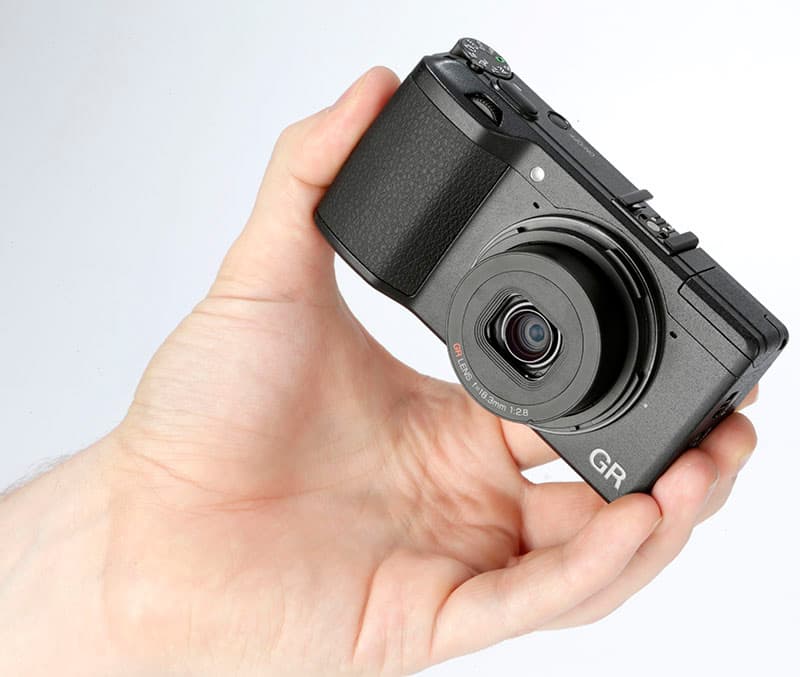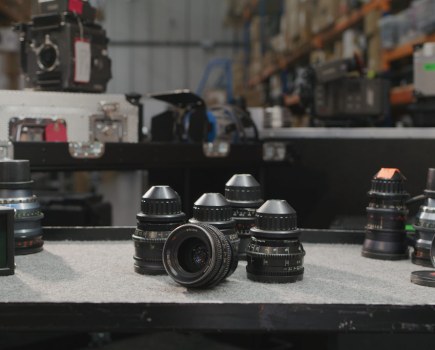First Look: Pentax Ricoh GR
With a 16.2-million-pixel APS-C sensor, the new Pentax Ricoh GR camera is the latest in a number of premium compact cameras that use sensors we are more used to finding in a DSLR or compact system camera. The most obvious comparison to make is with the recent Nikon Coolpix A, which features a sensor with a similar specification and has an equally similar small magnesium-alloy body. However, the Pentax Ricoh GR is smaller, lighter and with a price of £599, it could offer some very strong competition.

Legacy
Despite being a new camera, the Pentax Ricoh GR has a legacy going back to 1996, when the first Ricoh GR 35mm film compact camera was released. As one of the most highly prized compact cameras of its generation, the latest digital version has a lot to live up to.
Of course, this isn’t the first Ricoh GR digital camera, which was the GR Digital (GR D) launched in 2005. The most recent in this line of cameras is the GR IV, which features a large compact camera sensor, which is still 9x smaller than the APS-C sensor in the new Pentax Ricoh GR. Such is the confidence in the new Pentax Ricoh GR that the GR IV is to be discontinued.
Features
Besides the new 16.2-million-pixel APS-C sensor, the other most notable feature of the new camera is the 18.3mm GR f/2.8 fixed lens. This is the equivalent of a 28mm lens on a full-frame sensor, with a large f/2.8 aperture helping to create a shallow depth of field and helping to enable low-light shooting.
In fact, the lens has been designed specifically to complement the sensor of the GR D and it comprises seven elements, in five groups, with two aspherical lenses. It also features a 2EV neutral density filter to help use the lens at f/2.8 in bright light. The combination of lens and sensor certainly looks impressive and we hope that it lives up to our expectations when we have a chance to fully test the camera.
Improvements have also been made to image processing, with the new Pentax Ricoh GR featuring the new GR Engine 4 image-processing engine. Stephen Sanderson, Pentax Product Coordinator, said that the new processing helps to ‘improve operating speed while reducing image noise’.
When speaking to Sanderson, one key message that Pentax Ricoh was keen to get across is that the GR is all about getting the best image quality possible. With this in mind, the GR doesn’t have an anti-aliasing filter over its sensor. This filter slightly blurs detail, which in turn helps to reduce moiré patterning, and by removing the filter images should be noticeably sharper.
Those concerned with moiré patterning will be pleased to hear the Pentax
Ricoh GR has Moiré Pattern Removal software located in camera. This can
be turned on, off and increments of intensity manually adjusted.
The processing system seemed to work well
in the test sample of the GR we used, with the 3in screen noticeably better
than the screen of a GRD IV, which we had alongside the new camera. In fact, the screen looked bright, responsive and had a good level of contrast. The on-screen menus looked almost identical to the Ricoh GXR and GRD IV cameras, which should please those thinking of switching from those cameras to the new model.
While it
was difficult to fully test the AF system, my initial thoughts are that it
seems very responsive, although it did hunt a little for the AF point when close
focusing. However, I will be able to comment in more detail when we have the chance
to give the camera a full test in the coming weeks.
The Ricoh GR range has always been popular
among street photographers, and with this in mind the speed of the new Pentax
Ricoh GR will be an important aspect for many. The camera has a reasonable
start up time of 1sec, and a claimed 0.2sec AF speed, with 4fps continuous
shooting and a maximum shutter speed of 1/4000sec. On paper, the
specification should certainly put the Ricoh GR on par with the competition in this
market, which seems to be growing at a rapid rate.

The Ricoh GR with optional optical viewfinder
and 21mm equivalent wideangle lens adapter
Sadly, there is no electronic viewfinder in the GR, although this has the benefit of helping to keep the price of the camera down. However, an optical viewfinder external viewfinder, the GV-1, that matches the 28mm equivalent focal length, will be available for around £220.
Build and Handling
Aesthetically, the Pentax Ricoh GR looks almost identical to the outgoing GR IV, although the new camera is slightly larger in size. Measuring just 117x61x34.7mm, and with a weight of 215g, Pentax Ricoh proudly claims that the GR is the smallest, lightest and most affordable compact camera with an APS-C sensor, and its small size and light weight are obvious the second you pick up the camera.

With all the buttons placed along the right-hand side of the camera, it is possible to control the GR with one hand while shooting. In fact, there is an excellent level of control. The general button layout is similar to that found on the Ricoh GXR and the GRD IV, with a familiar digital camera layout based around a central control dial. There is plenty of customisation, too, with three function buttons on the back of the camera that allow easy access to regularly used settings of your choice. In the past, we have loved the control system of Ricoh cameras and the GR looks set to follow suit, with a menu packed full of different options and settings to truly make the camera perform as you want it to.
Pentax Ricoh says it is committed to releasing regular firmware updates to the GR, and not just to resolve issues. Stephen Sanderson said, ‘If we can make the camera better with further features, we will’, which is a statement bound to be reassuring to those who purchase the camera.
Cost
What is most impressive is the price of the camera. Due to go on sale in the middle of May, the Pentax Ricoh GR will cost just £599, which is significantly less than the Nikon Coolpix A and Fujifilm X100S, both of which cost just under £1,000. If the image quality lives up to the promise, I would expect the Pentax Ricoh GR to shake up the premium compact camera market.
Key Specifications
- 16.2-million-pixel, APS-C-sized CMOS sensor
- ISO 100-25,600
- 18.3mm f/2.8 lens
- 3in, 1.23-million-dot LCD
- JPEG and DNG file saving
- SD, SDHC, SDXC memory card
- Contrast Detection AF
- Dimensions 117x61x34.7mm
-
Weight 215g (body only)







